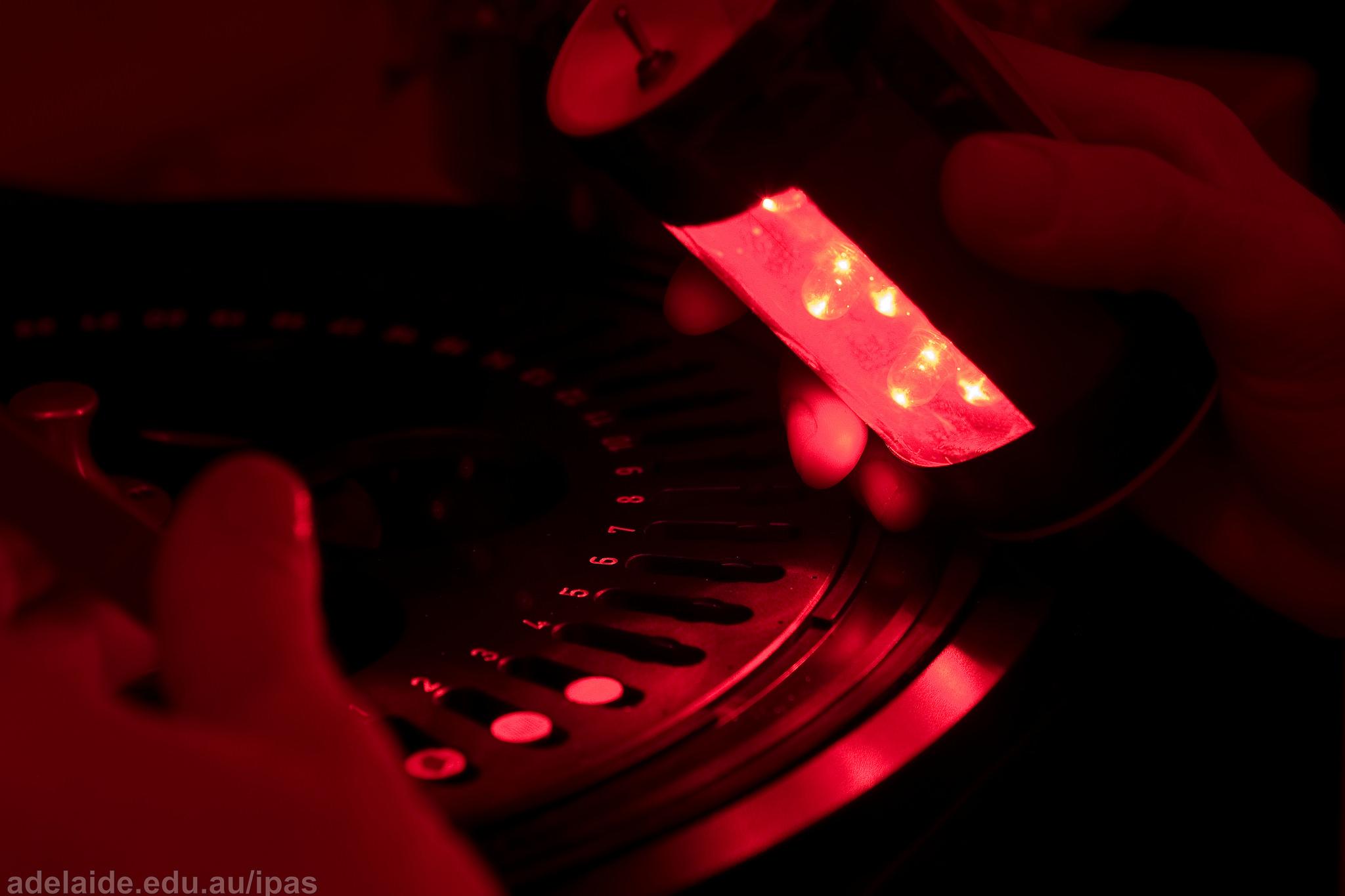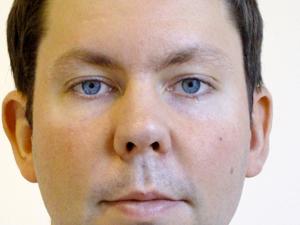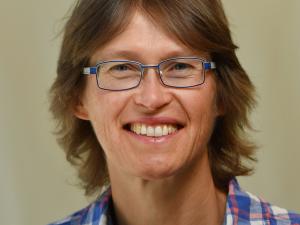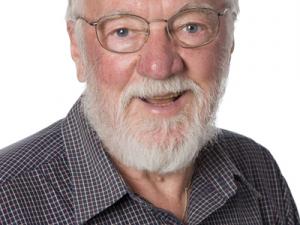Environmental Luminescence

Optical dating and luminescence - image courtesy IPAS Institute for Photonics and Advanced Sensing
The Environmental Luminescence group studies a range of real-world problems requiring the detection of ultra-low levels of light, of relevance to Environmental Monitoring, Quaternary Geology, Archaeology, Palaeontology, Earth Sciences, and Defence and National Security.
Our research interests lie both in the underlying physics and in the applications. The facilities are located in the Prescott Environmental Luminescence Laboratory in the state-of-the-art “The Braggs” building.
The use of luminescence for measurement of the radiation dose absorbed by natural minerals – an essential component in finding the age of artefacts and geological formations - is a core area of research for luminescence dosimetry and geochronology (Thermoluminescence and Optical Dating).
In collaboration with DSTG we have expanded our program to include the study of radiation absorption by artificial materials. This is a niche application for Forensic and Retrospective Dosimetry (population dose reconstruction) purposes following radiological events such as the Fukushima accident.
We are also now developing a range of activities in the areas of real-time sensing of radiation and mineral species identification for mining and mineral processing.
Geochronology
Recently acquired luminescence readers enable the optical dating of individual grains of minerals, and the unique spectral and spatially-resolved capabilities at extremely low light levels of our “3D-TL” spectrometer and Photon-Counting Imaging System (PCIS) offer opportunities for R&D of new Geochronological techniques. These include methods exploiting spatial resolution to improve and extend the current single-quartz grain optical dating techniques by applying TL and OSL analysis to the same individual grains of grain arrays and for measurement of depth-dose profiles and surface studies, and time-resolved OSL analysis for mechanism investigations.
These apparatus also enable photon-counting sensitivity to be applied using red and near-IR luminescence emissions, opening major new areas including the potential to increase the time range for TL dating and to broaden the suite of known environmental dosimeter materials.
Defence and national security
TL and OSL dosimetry can reveal prior exposure to radiation after the ionising radiation sources or radioisotopes have been removed, i.e., in situations where it is not possible to obtain radiation dose data by any other means, such as in the clean-up phase following a radiological event. In these applications, luminescence complements “conventional” radiation detection methods: the radiation damage detected by luminescence in the aftermath of exposure to ionising radiation is closely analogous to a persistent fingerprint, and applications in which this capability fills a unique role include Retrospective Population Dosimetry following a radiological event or nuclear accident, and Forensic Analysis.
However, luminescence dosimetry properties have been comprehensively studied for very few natural crystalline minerals, chosen for their potential for Geochronology, and a similarly small number of modern man-made materials. We conduct research programs both to discover new opportunistic dosimeter materials, both natural and artificial, and to extend the applicability of known dosimeter minerals.
Mining and mineral processing
We are currently developing focus on research for mining & mineral processing and material characterisation, in collaboration with the Institute for Mineral and Energy Resources. This includes the real-time monitoring of radiation fields and radionuclide detection using radiation-sensitive optical fibres, and creating novel fluorescence analysis techniques using our new facilities, notably a UV-IR Spectrofluorimeter/ OPA lasers for mineral identification and materials characterisation.
Project: New tools for mapping radioactivity in metal ore: Metal ores that have very low radioactivity can command a significant price premium on the global metal ore market. Therefore there is a strong economic driver to understand the distribution of radionuclides throughout metal ore samples to enable smart mining techniques to reduce the level of radionuclides in ores that are exported from Australia.
A number of projects are available that will contribute to the development of new photonic tools required to allow the mapping of these radioactive isotopes, which can occur at the part per trillion level. This project is particularly suitable for students who are interested in applying their physics knowledge to an applied physics problem that is important to Australia.
We invite discussion with students interested in engaging in any of the wide range of projects enabled by the Environmental Luminescence group research activities.
- Nigel Spooner | Lee Arnold | David Ottaway | Heike Ebendorff-Heidepriem | Don Creighton
- Research area: Environmental sensing
- Recommended honours enrolment: Honours in Physics





